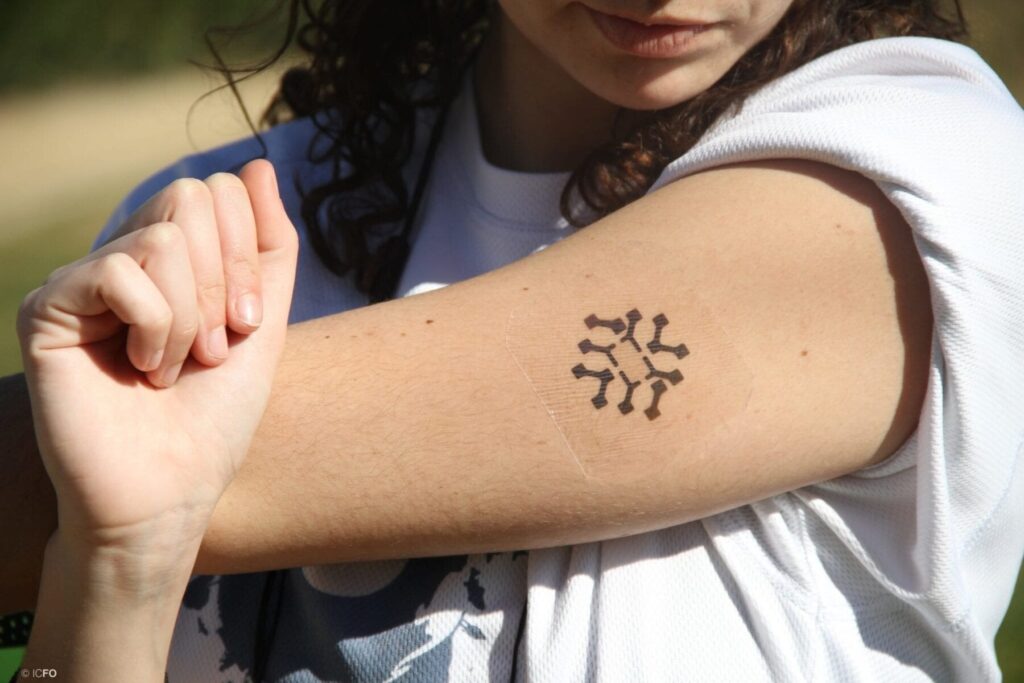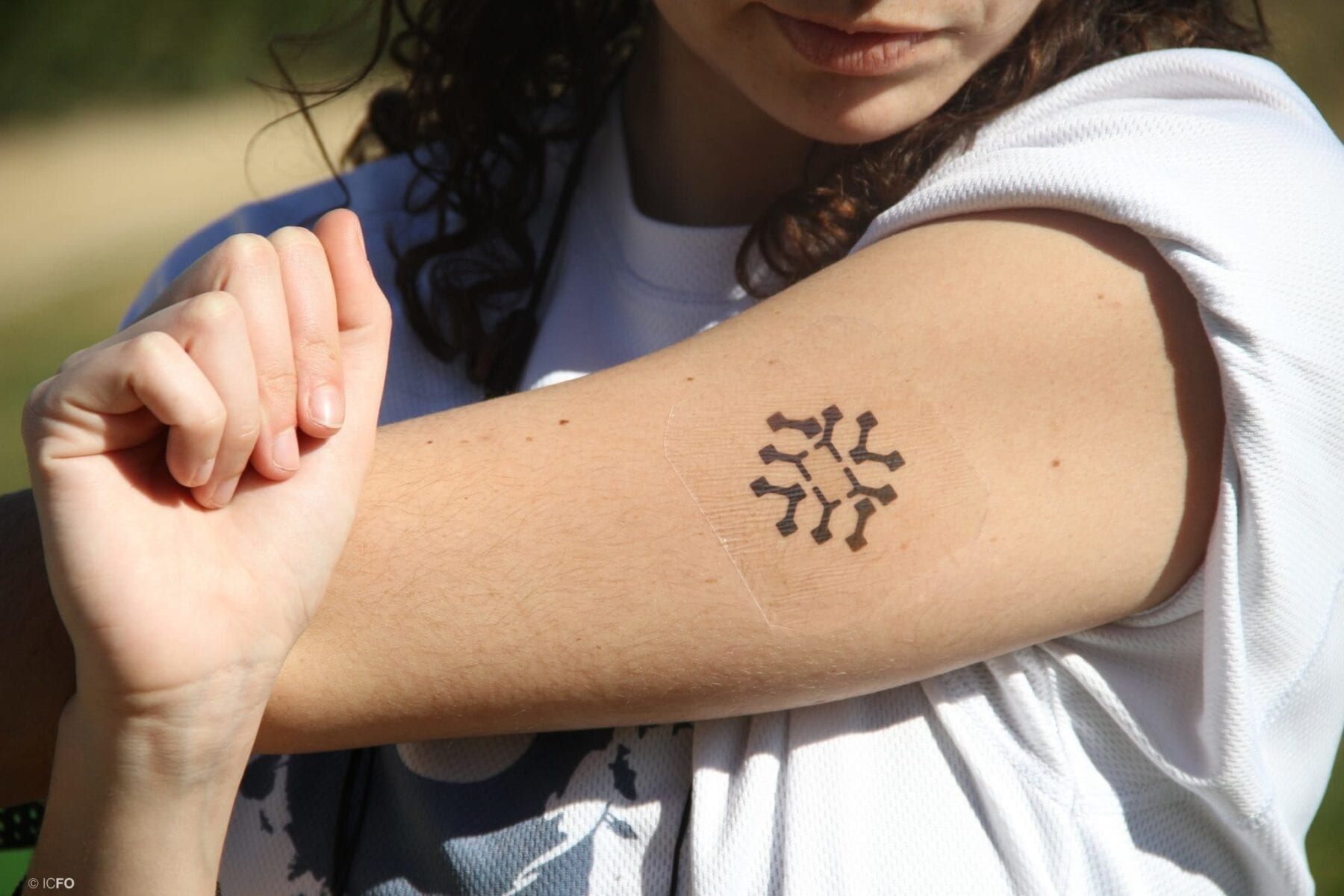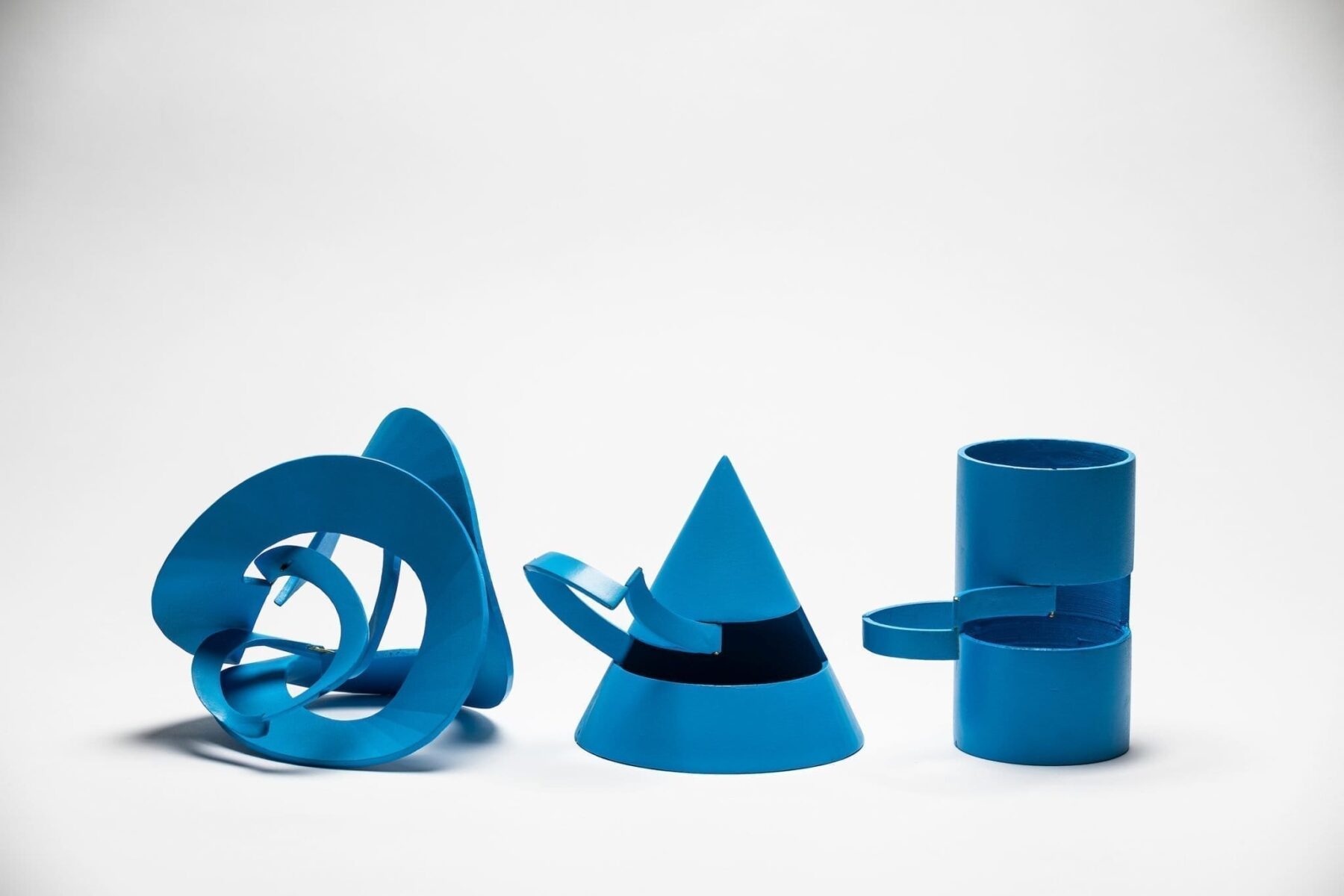
The Graphene Pavilion, organised by the Graphene Flagship and supported by the European Commission and GSMA, is returning to Mobile World Congress (MWC) 2019 with over 20 graphene-based prototypes, four of which are developed by the Graphene Flagship partner ICFO, based in Barcelona. These technologies aim to turn mobile phones into life saving devices.
The first of ICFO’s devices on display will allow customers to monitor their level of exposure to sunlight through a UV sensor. Designed as a flexible, transparent and disposable patch, it connects to a mobile device and alerts the user once he or she has reached a defined threshold of sun exposure.
Using the same core technology as the UV patch, ICFO’s fitness band is being developed to measure heart rate, hydration, oxygen saturation, breathing rate and temperature, while monitoring the user when he or she is exercising, for example. However, the fitness band does more than simply measure physical activity.
Consider the following scenario. A person is trekking in the remote amazon jungle with limited access to water. By measuring the skin hydration of their body with ICFO’s fitness band, the user can optimize water intake, preventing any sort of dehydration. Similarly, an explorer hiking to the peak of mount Everest could use the band to accurately monitor oxygen saturation in blood. The high altitude can severely effect oxygen saturation in the body. Using the band, the hiker could monitor these levels and emit a warning if oxygen saturation in the blood decreases drastically below a certain level.
In addition to these prototypes being exhibited at MWC 2019, ICFO will also showcase two other light-based graphene technologies. These include the world’s smallest single pixel spectrometer and a graphene-enabled hyperspectral image sensor, both with broadband capabilities, beyond to what was once perceived possible without the use of costly and bulky photodetection systems.
By enabling spectroscopy in such small dimensions, consumers could now be equipped with tools that previously were only available to highly specialised laboratories. From the detection of counterfeit drugs to the identification of harmful substances within a product that we use or food that we eat, compact, low-cost spectrometers could become an indispensable accessory of our everyday life.
“Built into a smart phone camera, the graphene-based camera sensor allows phones to see more than what’s visible to the human eye,” comments Frank Koppens, group leader at Graphene Flagship partner ICFO, and Chair of the Graphene Flagship MWC Committee. “Made up of hundreds of thousands of photodetectors, this incredibly small sensor is highly sensitive to UV and infrared light.”
“This technology would allow users in the supermarket to hold the camera to fruit and infer which is the most fresh piece. Or, in a more extreme example, the camera could be used for driving in dangerously dense fog by providing augmented outlines of surrounding vehicles on the windscreen.”
To find out more about these technologies and to meet the team of experts that have developed these applications, visit the Graphene Pavilion at MWC in NEXTech Hall 8.0 Stand 8.0K31 on February 25-28.
Learn more: Graphene-based wearables for health monitoring, food inspection and night vision
The Latest on: Graphene-based wearables
[google_news title=”” keyword=”graphene-based wearables” num_posts=”10″ blurb_length=”0″ show_thumb=”left”]
via Google News
The Latest on: Graphene-based wearables
- Tracking the opioid epidemicon April 26, 2024 at 5:00 pm
The novel device is the first to use graphene-based field effect transistors to detect four different synthetic and natural opioids at once, while shielding them from wastewater’s harsh elements. When ...
- Pacific Basin to apply graphene-based propeller coatings on 40 shipson April 26, 2024 at 10:44 am
Following successful application and obtaining positive results from the graphene-based propeller coating on one of its Supramax dry bulk vessels, Pacific Basin has started the rollout of XGIT-PROP ...
- Novel graphene oxide spray coating advances antiviral protection of face maskson April 22, 2024 at 9:57 am
In the relentless battle against airborne viruses, researchers have developed a new spray coating to improve the antiviral efficacy of personal protective equipment, notably face masks. The study is ...
- Graphene in Biomedicine: Opportunities and Challengeson April 19, 2024 at 4:59 pm
Graphene, whose discovery won the 2010 Nobel Prize in physics, has been a shining star in the material science in the past few years. Owing to its interesting electrical, optical, mechanical and ...
- What is a Graphene Semiconductor?on April 4, 2024 at 5:00 pm
Graphene contains a carbon chain linked in sp 2 hybridization ... She is interested in pursuing research in 2D materials-based wearable electronics and solar cells. Gopika is a self motivated person, ...
- Graphene foam is the future of IoT power, maybeon August 7, 2023 at 10:56 am
and for wearable biosensors used to diagnose various health conditions. The Scottish researchers said they were also able to use the foam sensor to charge batteries. Whether graphene foam will ...
- Global Graphene Companies – Manufacturers and Supplierson August 14, 2020 at 11:38 pm
For instance, graphene-based nanomaterials have many promising applications ... energy, flexible electronics, wearables, water treatment and many more. The company's core technology is the ...
- First scalable graphene yarns for wearable textiles producedon March 3, 2019 at 11:04 pm
A team of researchers led by Dr Nazmul Karim and Prof Sir Kostya Novoselov at The University of Manchester have developed a method to produce scalable graphene-based yarn. Multi-functional wearable ...
- Flexible batteries power the future of wearable technologyon August 10, 2017 at 8:56 am
“The development of graphene-based flexible textile supercapacitor using a simple and scalable printing technique is a significant step towards realising multifunctional next generation wearable ...
via Bing News











